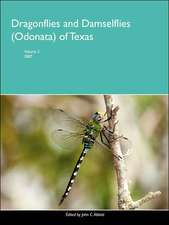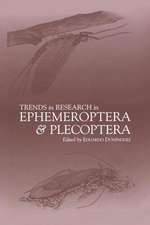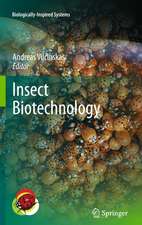Natural Enemies: An Introduction to Biological Control
Autor Ann E. Hajek, Jørgen Eilenbergen Limba Engleză Paperback – 25 iul 2018
Preț: 438.81 lei
Nou
Puncte Express: 658
Preț estimativ în valută:
83.97€ • 87.89$ • 69.89£
83.97€ • 87.89$ • 69.89£
Carte tipărită la comandă
Livrare economică 01-15 aprilie
Preluare comenzi: 021 569.72.76
Specificații
ISBN-13: 9781107668249
ISBN-10: 1107668247
Pagini: 452
Ilustrații: 136 b/w illus. 25 tables
Dimensiuni: 174 x 246 x 21 mm
Greutate: 0.91 kg
Ediția:2Nouă
Editura: Cambridge University Press
Colecția Cambridge University Press
Locul publicării:New York, United States
ISBN-10: 1107668247
Pagini: 452
Ilustrații: 136 b/w illus. 25 tables
Dimensiuni: 174 x 246 x 21 mm
Greutate: 0.91 kg
Ediția:2Nouă
Editura: Cambridge University Press
Colecția Cambridge University Press
Locul publicării:New York, United States
Cuprins
Preface; Acknowledgements; Part I. Introduction: 1. Why use natural enemies?; 2. Introduction to biological control; Part II. Strategies for Using Natural Enemies: 3. Classical biological control; 4. Augmentation: inundative and inoculative biological control; 5. Conservation and enhancement of natural enemies; Part III. Biological Control of Invertebrate and Vertebrate Pests: 6. Ecological basis for use of predators, parasitoids, and pathogens to control pests; 7. Predators; 8. Insect parasitoids: attack by aliens; 9. Parasitic nematodes; Part IV. Microbial Pathogens of Invertebrates and Vertebrates: 10. Bacterial pathogens of invertebrates; 11. Viral pathogens of invertebrates and vertebrates; 12. Fungal pathogens of invertebrates; Part V. Biological Control of Weeds: 13. Biology and ecology of herbivores used for biological control of weeds; 14. Phytophagous invertebrates and vertebrates; 15. Plant pathogens for controlling weeds; Part VI. Biological Control of Plant Pathogens and Plant Parasitic Nematodes: 16. Biology and ecology of microorganisms for control of plant diseases; 17. Microbial antagonists combating plant pathogens and plant parasitic nematodes; Part VII. Biological Control: Concerns, Changes and Challenges: 18. Making biological control safe; 19. Biological control as part of integrated pest management; 20. Our changing world: moving forward; Glossary; References; Index.
Recenzii
'This second edition of Natural Enemies has been skillfully updated to cover advances in biological control since 2004 which is sure to reinstate it as the standard introduction to the subject for undergraduates and other interested readers. Written by leading international experts, the text is both authoritative and easy to read, and is richly illustrated with fascinating examples of biological control applications from around the world. The expertise of the authors is readily apparent throughout the book and the breadth of coverage of all aspects of biological control is excellent. I highly recommend this text to anyone seeking to develop a course or workshop on the subject due to its comprehensive coverage, accessibility without need for specialist knowledge, and engaging style. It is reassuring to know that a new generation of biological control practitioners will be inspired by this well informed and enthusiastic introduction to the subject.' Nicholas J. Mills, University of California, Berkeley
'The second edition retains all that was positive from the first edition - including wonderful graphs, illustrations and topic boxes - and adds a number of exciting updates. The section on conservation biological control is expanded, which reflects growth in this area over the last two decades. I also appreciated the updates to the last section of the book, which focuses on the evolving science of biological control. Here Hajek and Eilenberg provide a thoughtful and up-to-date discussion of the risks of biological control along with a nice sampling of risk assessment models. Also - the last chapter looks ahead at issues that the discipline will need to come to terms with including climate change, sustainability and the continued unintentional movement of species across the globe.' George Heimpel, University of Minnesota
'The second edition retains all that was positive from the first edition - including wonderful graphs, illustrations and topic boxes - and adds a number of exciting updates. The section on conservation biological control is expanded, which reflects growth in this area over the last two decades. I also appreciated the updates to the last section of the book, which focuses on the evolving science of biological control. Here Hajek and Eilenberg provide a thoughtful and up-to-date discussion of the risks of biological control along with a nice sampling of risk assessment models. Also - the last chapter looks ahead at issues that the discipline will need to come to terms with including climate change, sustainability and the continued unintentional movement of species across the globe.' George Heimpel, University of Minnesota
Notă biografică
Descriere
Presents different strategies for biological control along with their ecological bases, using many examples from a diversity of ecosystems.













